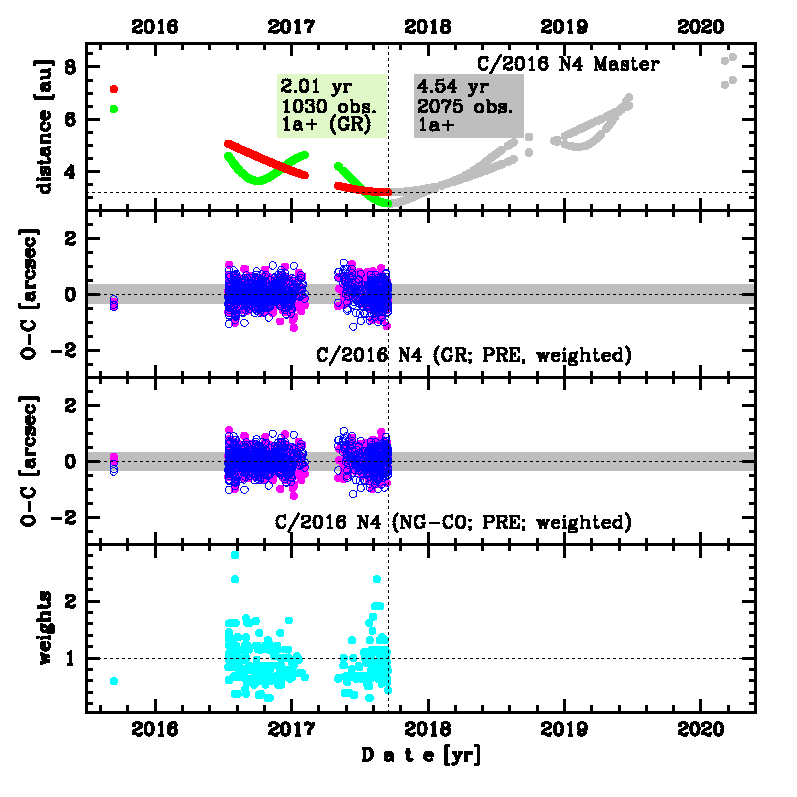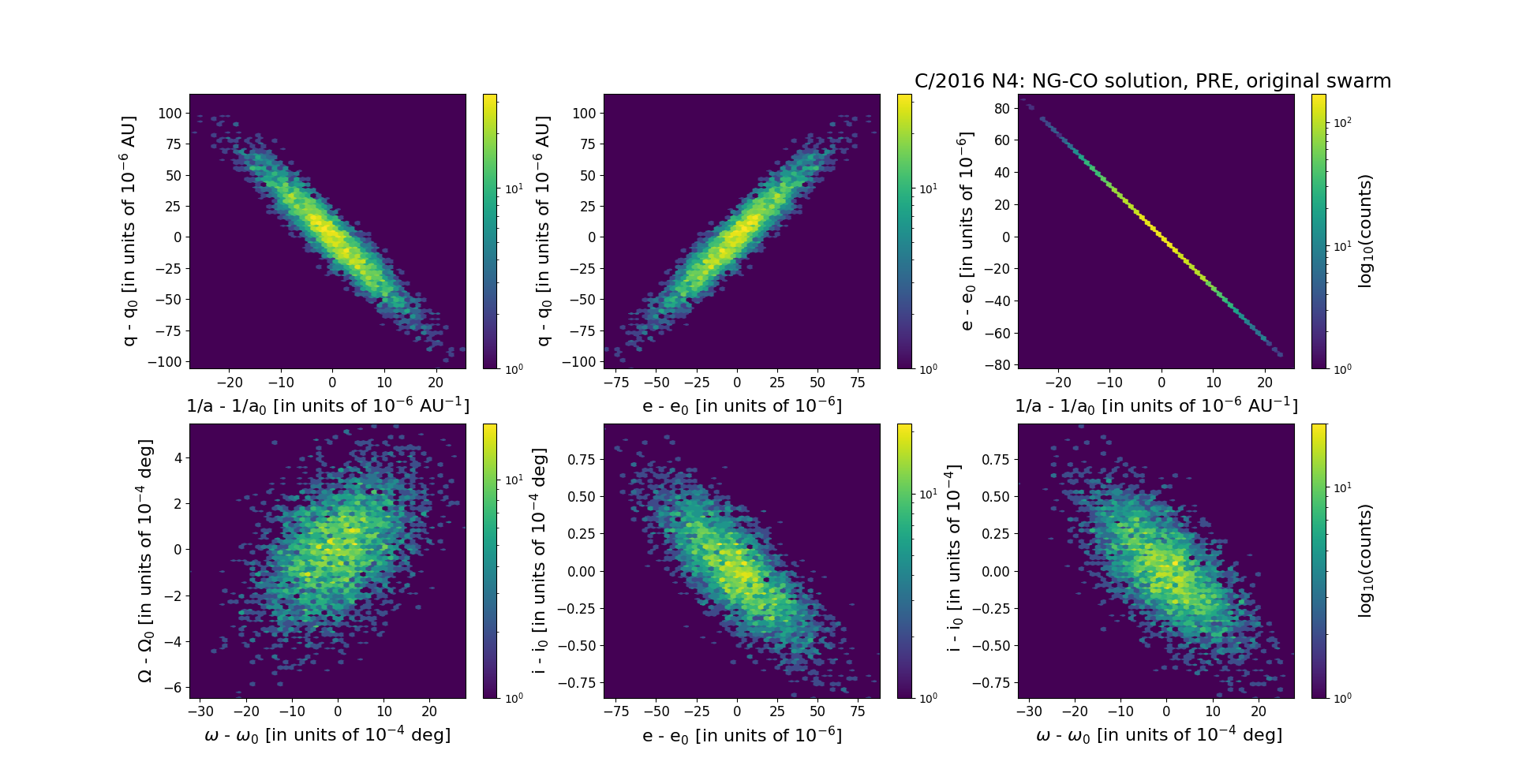C/2016 N4 Master
more info
Comet C/2016 N4 was discovered on 15 July 2016 with Mobile Astronomical System of the Telescope-Robots (MASTER), that is about months after its perihelion passage.
Some prediscovery images of this comet were found: taken on 11 September 2015 by ISON-SSO Observatory (Siding Spring).
Solutions given here are based on data spanning over 4.54 yr in a range of heliocentric distances: 7.14 au – 3.199 au (perihelion) – 8.37 au.
NG orbits using full data-arc as well as independently using pre-perihelion and post-perihelion data are determinable.
See also Królikowska and Dones 2023.
| solution description | ||
|---|---|---|
| number of observations | 1030 | |
| data interval | 2015 09 11 – 2017 09 16 | |
| data arc selection | data generally limited to pre-perihelion (PRE) | |
| range of heliocentric distances | 7.14 au – 3.20 au (perihelion) – 3.2 au | |
| type of model of motion | NC - non-gravitational orbits for symmetric CO-g(r)-like function | |
| data weighting | YES | |
| number of residuals | 2031 | |
| RMS [arcseconds] | 0.33 | |
| orbit quality class | 1a | |
| orbital elements (barycentric ecliptic J2000) | ||
|---|---|---|
| Epoch | 1713 08 29 | |
| perihelion date | 2017 09 16.07552764 | ± 0.00229324 |
| perihelion distance [au] | 3.20058101 | ± 0.00001207 |
| eccentricity | 0.99944302 | ± 0.00001056 |
| argument of perihelion [°] | 55.962072 | ± 0.000355 |
| ascending node [°] | 354.089086 | ± 0.000048 |
| inclination [°] | 72.512547 | ± 0.000105 |
| reciprocal semi-major axis [10-6 au-1] | 174.02 | ± 3.30 |
| file containing 5001 VCs swarm |
|---|
| 2016n4pc.bmi |

Upper panel: Time distribution of positional observations with corresponding heliocentric (red curve) and geocentric (green curve) distance at which they were taken. The horizontal dotted line shows the perihelion distance for a given comet whereas vertical dotted line — the moment of perihelion passage.
Middle panel(s): O-C diagram for a given solution (sometimes in comparison to another solution available in CODE), where residuals in right ascension are shown using magenta dots and in declination by blue open circles.
Lowest panel: Relative weights for a given data set(s).
Middle panel(s): O-C diagram for a given solution (sometimes in comparison to another solution available in CODE), where residuals in right ascension are shown using magenta dots and in declination by blue open circles.
Lowest panel: Relative weights for a given data set(s).
